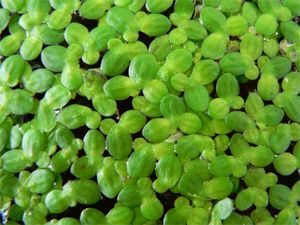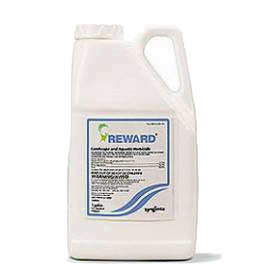Weedtrine-D is an 8.53% diquat dibromide herbicide that can be used in and around still lakes, ponds, and ditches. It is specially formulated for bodies of water that are less than 0.5 surface acres. It is a systemic, contact herbicide that can be used to treat cattails, duckweed, pondweed, milfoil, and naiads, as well as terrestrial grasses and broad-leaf weeds. Weedtrine-D works by disrupting the plant’s cell membrane and altering the process of photosynthesis. It can be applied from mid-April through October for best results.
 |
| Naiads |













